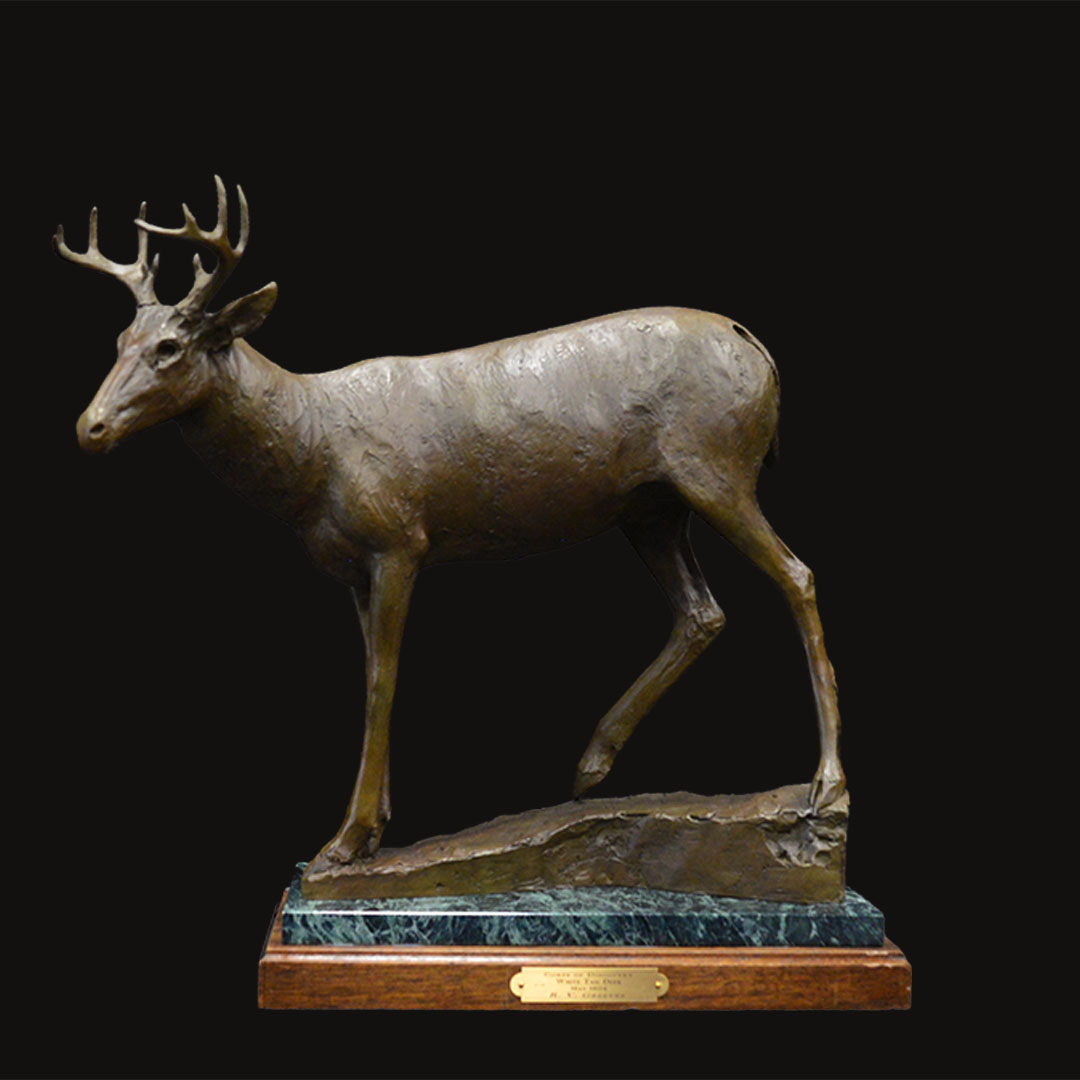Grace in stillness, memory in motion—the first witness of the frontier.
Richard Vernon Greeves
Contemporary

“White Tail Deer – May 1804” by Richard Vernon Greeves is a quiet, elegant sculpture that captures one of the earliest living symbols encountered by the Corps of Discovery. With its head slightly raised and ears alert, the deer stands as more than an animal—it becomes a sentinel of the unknown, a presence both natural and sacred.
Greeves renders the white tail deer with minimal flourish, focusing instead on proportion, posture, and poise. The stance suggests a moment suspended between flight and calm—reflecting the balance between wild instinct and environmental awareness. This piece is not about conquest or chase. It’s about reverence for what was already there.
The date, May 1804, marks the very beginning of the Lewis and Clark expedition. This sculpture reminds us that before maps were drawn or rivers were named, the land was already full of life—watching, waiting, unrecorded but never unaware.